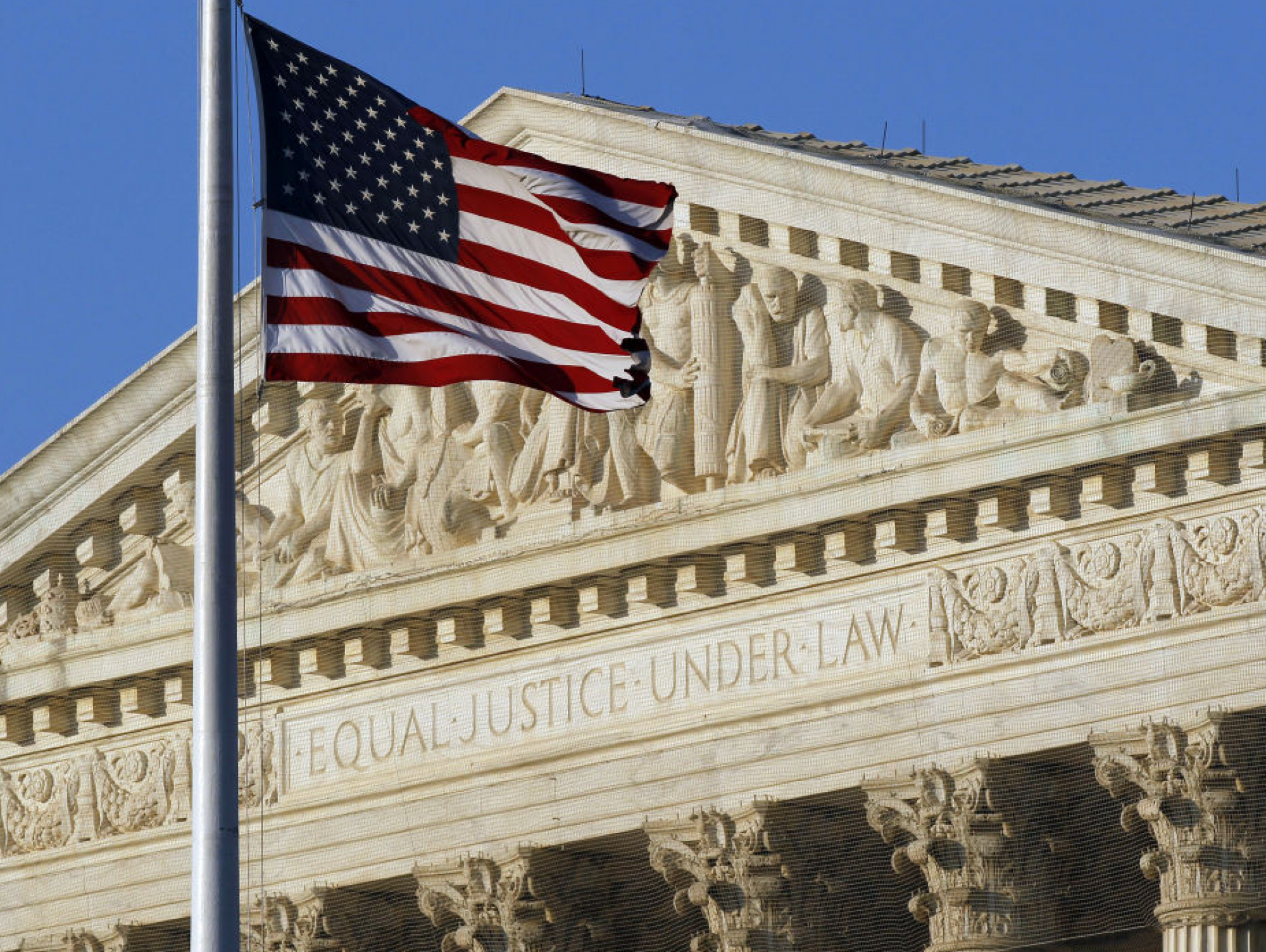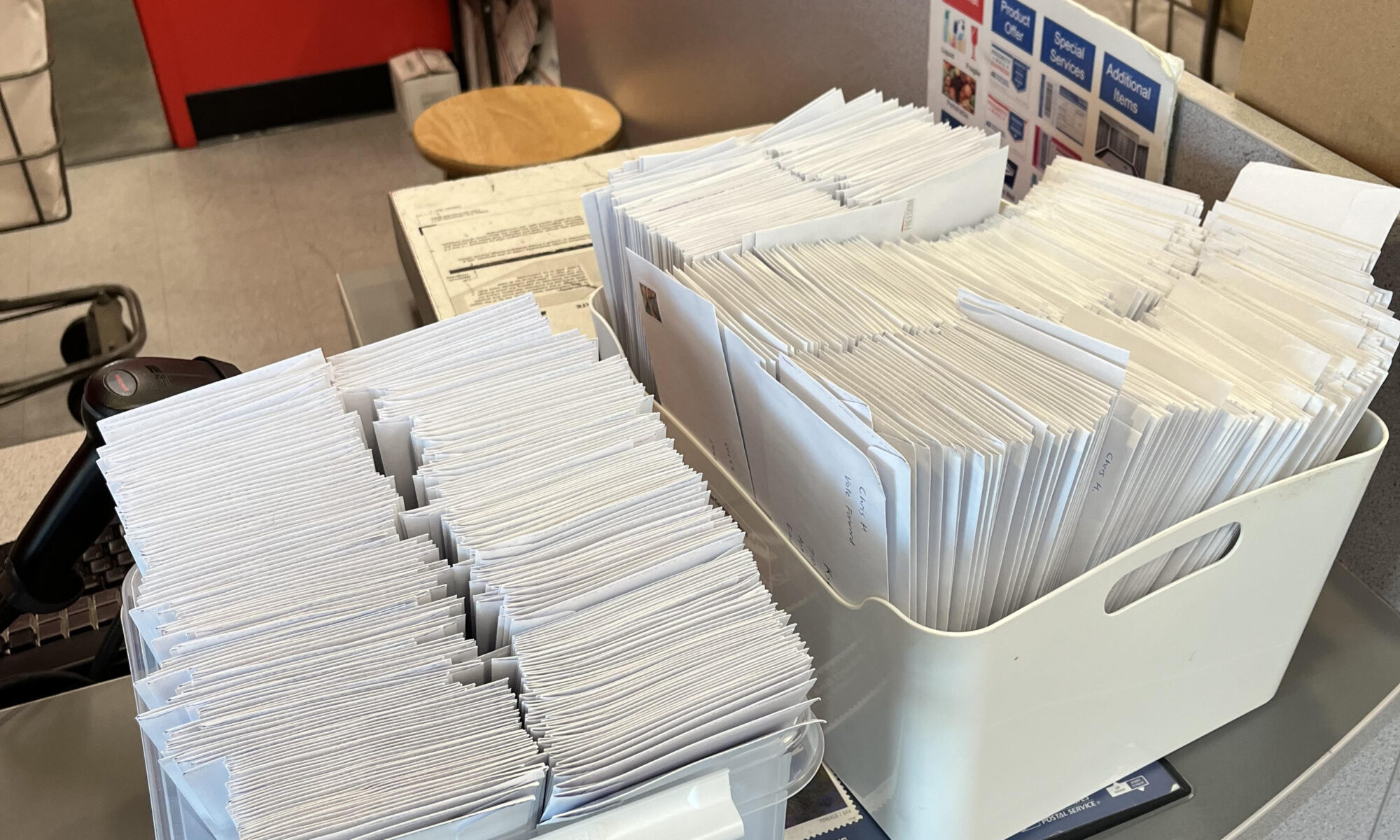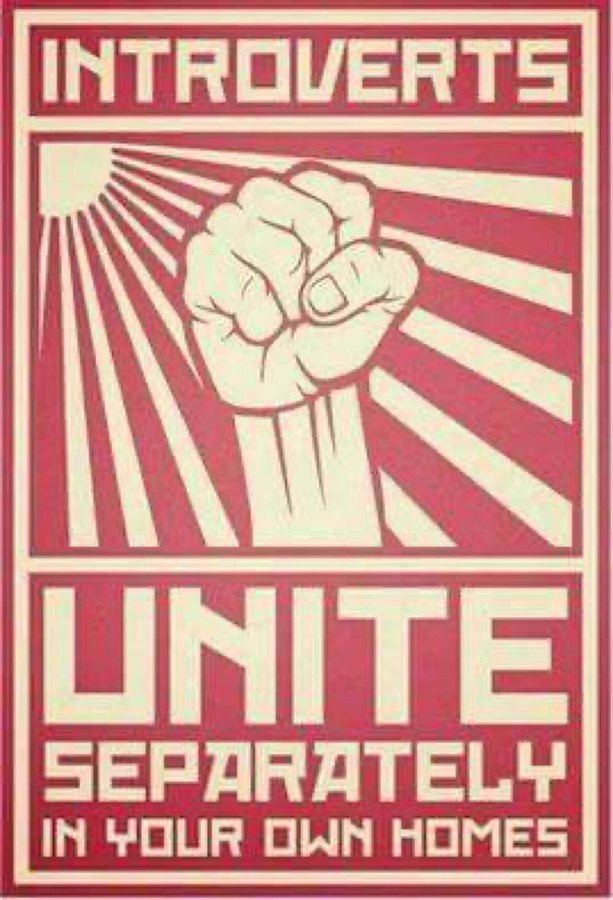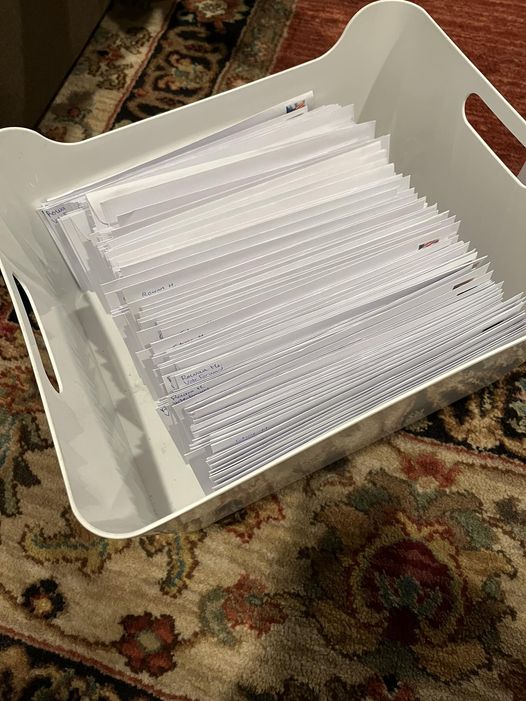When we last left our intrepid introvert, I was writing letters to swing states to get out the vote. I kept that up until October 1st, the designated first day to send them out for maximum impact.
By then, I was so sick of writing ’em. The final tally was 100 letters sent early to new voters in Pennsylvania, and 740 more spread across the swing states. That’s Michigan, Wisconsin, an additional 100 to Pennsylvania, then bunches to North Carolina, Georgia, Arizona, and Nevada. And in case you haven’t seen the price of postage lately, the stamps added up to a sizeable bite of my disposable income. So I felt like I’d done my part and it was time to stop with the letters.
But that feeling didn’t last long. I didn’t want to wake up on November 6th thinking “Did I really do all I could have done?” So I looked around for events in my area that took more time than money. Canvassing supposedly has the highest-yield ratio of all the get-out-the-vote efforts, so I wanted to get in on the ground game.
I signed up to take a bus to a “nearby” swing state, canvass Saturday afternoon, get put up in a hotel for the night (Exhibit A of where your campaign donation money goes) and canvass all day Sunday. Then it’d be back on the bus and we’d be home by bedtime.
So I got trained over Zoom during the week, got up at 4:45 Saturday morning (oof) and met up at the local campaign headquarters where the buses gathered in the parking lot. Around 100 of us got on the road for a trip that took a lively four hours and change. I got to know my bus-buddy to ensure neither of us were to be left behind, and eventually we rolled into a little mini-mall in what looked like an industrial section of town.
My First Time Canvassing
The swing state town was big enough to matter, but the field office was a bit smaller than the one on Dem home turf. Trying to assign door-knocking turf to 100 volunteers, even with the handy app designed for the purpose, took some time. But of all the problems to have, “too much manpower” was a pretty good one.
I went around back to where a coordinator gave us some more training specific to the state, such as saying where the polling places were, the hotline for if a resident hadn’t gotten a ballot, and so forth. Then I got back in line to get my turf assignment.
While I waited, a steady stream of drivers grabbed volunteers going to clusters of destinations, and I realized every volunteer’s car was essential when they had a surge of people-power like this. My bus-buddy shared an Uber with some others and was gone well before I was ready. No problem. I said, “I’m not choosy, put me where you need me.”
I was given a turf 50 miles away.
About five minutes later, the team conferred and agreed that shipping me all the way out there solo wasn’t a good idea — they’d hit that place the next day with the bus and a bigger group of volunteers. Instead, I got a ride to their sister office a suburb over, got turf near there, and another ride to my destination.
On My Own
So there I was dropped, a few hundred miles from home, alone, on foot with a pile of flyers and an app telling me to knock on doors and ask strangers annoying questions. It was a warm day, and I’d brought my jacket because I’d prepped for my hometown, and at 6 am it’d been chilly.
The first person I canvassed was the easiest. He was standing out by his truck in his front yard, had already voted straight up and down the ballot, and thanked me for volunteering, saying “I don’t know how you guys do it.” We shared a smile: I had no idea how we did it, either.
Most everyone else on the 3-4 streets I hit had already been canvassed earlier by a related group, a PAC local to the state. Unfortunately, this meant that most people were kind of annoyed at having been bothered twice, but there wasn’t much I could do about it. It’s actually illegal for a political campaign to coordinate with an outside group, so we couldn’t share our data of which houses had been hit already. (Of course, if you’re rich and influential and your candidate wins, they might be corrupt enough to pardon you, so really, your mileage may vary.)
Some houses had signs saying things like “NO SOLICITING — REFER ALL INQUIRIES TO GERMAN SHEPHERD” and they weren’t kidding. Others were friendly and said yes, they voted already, so I could check them off. Rather importantly, that meant we could stop bothering them and focus on other, more persuadable households.
I hit 17 houses in total and was getting tired out and dried out. My bag was heavy enough to make my shoulder ache, I was sweating under my jacket, and oh yeah, remember how I dislocated my knee in January? The knee was fine, but the ankle started taking some stress. I had to stop and sit on the curb to drink a little water.
At the next few houses, I saw flyers identical to the ones I was leaving, and followed them until I ran into two other volunteers. They gave me a ride in their car and we coordinated — they were almost done. They’d take four more and I’d go in the other direction down the street to get the last two.
And Then There Was Jerry
The second-to-last house, no one was home. I was ready to give up, but I went to the last house and knocked anyway.
Answering the door was this 60-something guy I’ll call Jerry. I started off with the standard patter: “Hey, sorry to bother you, I’m Chris, I’m a volunteer with the state Democrats and (tired grin) you’ve probably heard there’s a really big election coming up…”
And Jerry lights up, comes out of the house, and plops down on a chair in front of his porch. Big smile. He’s like, “Yeah, yeah, tell me all about it.”
I thought he was messing with me, and got nervous because I’d have to remember my shpiel about what the presidential and Senate candidates’ positions were on any particular topic. I know my senator’s positions, but assembly members in another state? Oh, heck no.
But he said, “Do you have a ballot I can use?”
“Um,” I said, “we’re with the campaign, not the government. We don’t have ballots. The state should have sent you a ballot already in the mail.”
At this point, another 60-something guy comes to the door. Maybe a roommate, maybe a relative, maybe his lover, who knows? This guy says, “Oh, Jerry, you said you didn’t want to vote this year, so I threw out your ballot.”
“Oh,” I said, not adding the word crap. This was actually more familiar territory. “Well, there’s a couple of ways you can still vote. You can go to a polling place, like the student union at the local university, most of the public libraries… early voting’s still on until November 1st.”
“Yeah, yeah,” said Jerry’s friend. “I gotta make this up to you, I’ll drive you tomorrow.”
I said my goodbyes, because they’d already covered the next part of the conversation, which was me encouraging them to commit to a plan, preferably voting early so they wouldn’t be stuck in a line on Election Day.
With my 19th house finished, I returned to the car, and said the words every canvasser wants to hear:
“I got one.”
Epilogue
The next day we had more time. My bus-buddy and I got successfully paired up. We handled maybe 50 houses, again coordinating with other volunteers when our turfs got too close or when another canvasser ran out of fliers and I ran some over. By the time the bus (and an Uber) got me back home, I was starving, sore, and tired. Yes, the campaign office had tons of pizza, water, and sugar, but the bus didn’t stop for dinner on its 4-hour return trip. At least I got to sleep that night feeling like I’d done a little something.
So I just want to say, if you’re out there canvassing, and it’s hot and the dust from the road is getting in your eyes and you’re thinking about giving up:
Push through.
Be as stubborn as those garbage bags that time cannot decay.
Go to that last house on the block.
You never know what might happen.
LINKS
I’ve posted this before, but I’ll post it again, because you might be reading this in the final week of this insane presidential campaign, and now is not the time to sit on the fence.
You can still volunteer for the ground game. Remember how I said canvassers have cars as a chokepoint? Bring some wheels to a big volunteer event and suddenly you’ll be everybody’s best friend.
Besides just Googling organizations in your county or city, Mobilize has volunteer events for canvassing, phone banking, text banking, and ballot curing.
What’s ballot curing, you ask?
This is when someone has made a mistake on their ballot that would render it invalid (in California, for example, a mail-in ballot needs the voter’s signature on the outside envelope or it doesn’t count). But if someone meets with the voter and gets them to reaffirm their ballot (i.e. calls them up or visits in person), they can say “there’s a problem with the ballot, fix it” and the vote can then be registered as valid. This matters a lot in super-close elections where sometimes as little as 500 votes stand between a potential representative and the U.S. House.
This process can be slow — people often don’t answer their phones or doors, so to make a difference, a campaign needs lots of volunteers, late in the game when the ballots have already been cast. And they need them done before the state’s deadline.
So HERE is a place to volunteer for ballot curing.
And don’t forget…
The Content Creator Team is the place to go if you’re a designer, videographer, artist, or meme creator. Yes, you read that right, you can meme for the team.
The Democratic Congressional Campaign Committee has this page here on being a virtual text banker. It’s like phone banking, but no speaking required!



